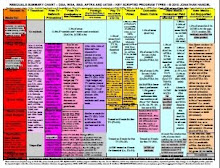In the “While you were out” department, the American Federation of Musicians and the studios signed a new deal . . . four months ago. But don’t feel like we’re late to the party — the deal doesn’t seem to have been reported in the Hollywood press. Talk about sotto voce. The negotiations themselves concluded in early November of last year, as I reported at the time, but it apparently took a while to reduce the deal to writing.
There are several items of note (so to speak) in the signed agreement, which runs through February 23, 2013:
* Wage increases are small by most Hollywood union standards: 1.5% or 2% per year. However, the increases in the AFM’s previous signed agreement also weren’t large by those standards, where 3.0%-3.5% have been the recent norm. Thus, it’s unclear if these numbers signify anything about the size of increases that the above the line unions will achieve in the upcoming (October 1 and beyond) cycle of bargaining.
* The Health Plan is being juggled around a bit. One thing that stands out apparently mirrors a provision in the IATSE health plan deal: up to 1% of the wage increases can be converted instead to an increased contribution to the health plan, if necessary for the plan’s financial reserves. That’s intriguing, because what usually happens in the above the line guilds and unions is that at most 0.5% of a wage increase goes instead to an increased P&H contribution. Depending on the needs of the above the line health plans (each union or guild has its own), we might see a 1% conversion in the upcoming negotiations.
* The New Media template adopted by the above the line unions and guilds and by IATSE has now been adopted by the Musicians as well. The AFM deal resembles the IA’s, in that there are somewhat fewer residuals than the above the line unions and guilds achieved. For instance, when a television show is streamed on ad-supported new media (such as the free version of Hulu), the above the line unions and guilds receive residuals but IATSE and AFM don’t.

